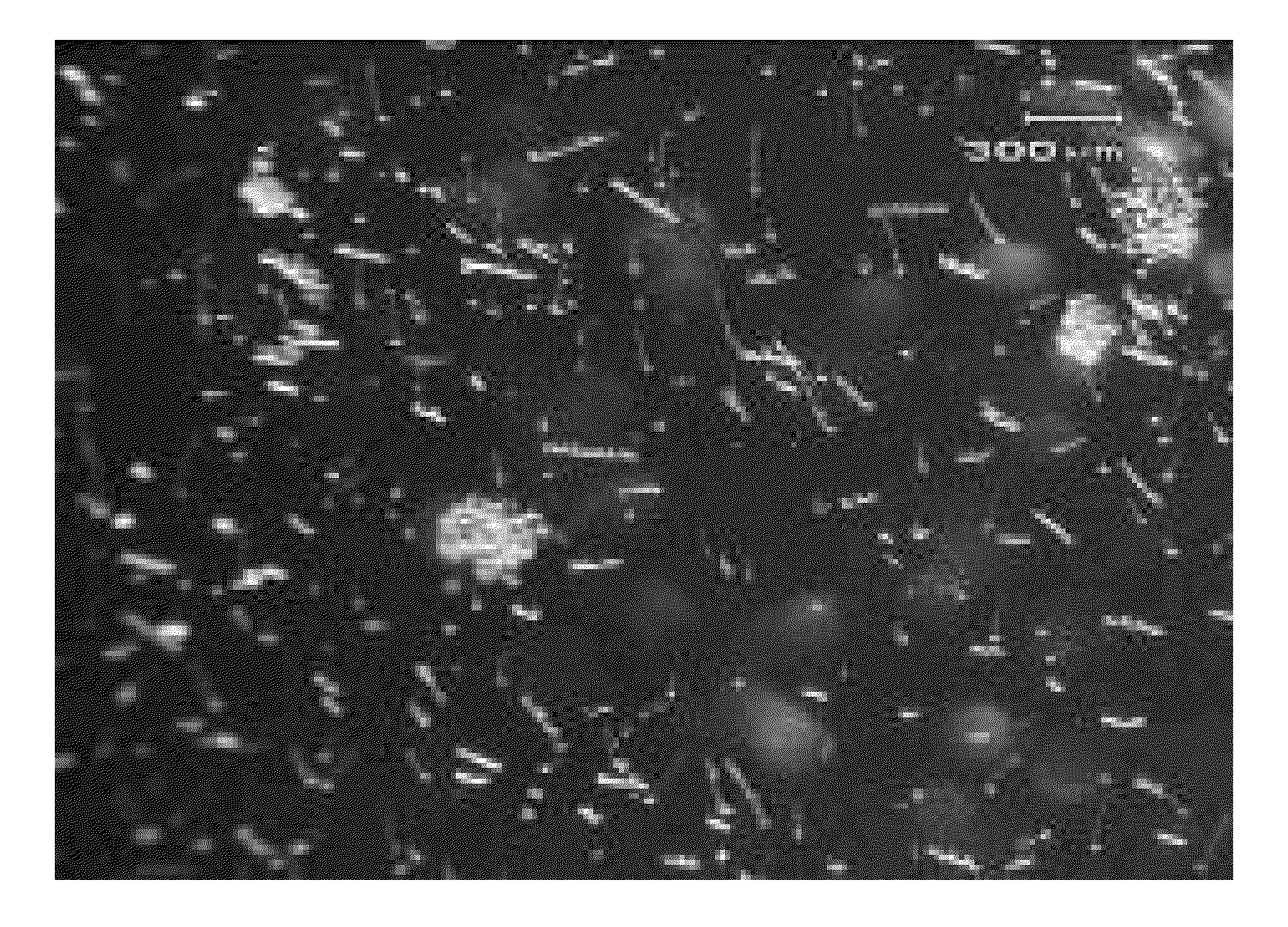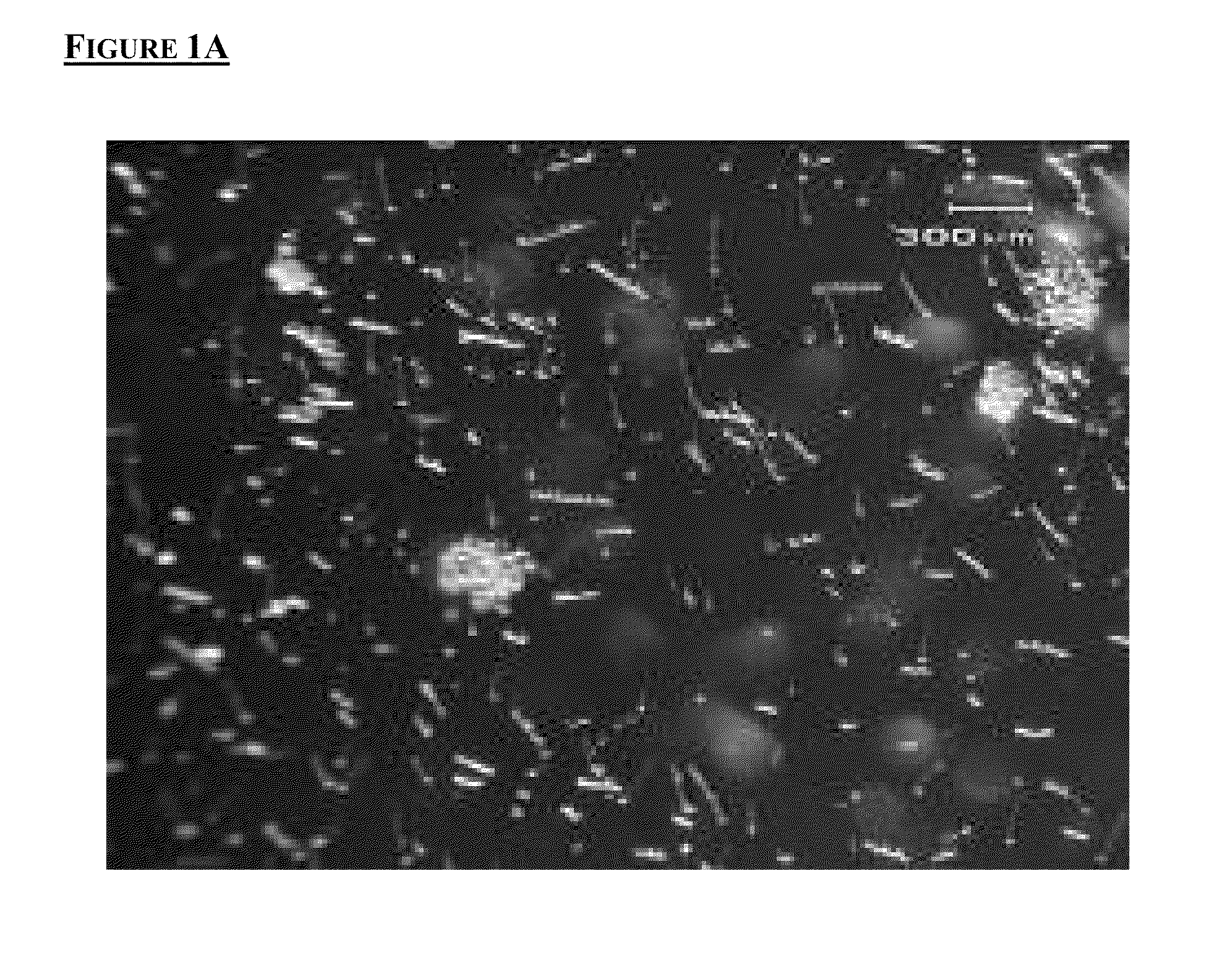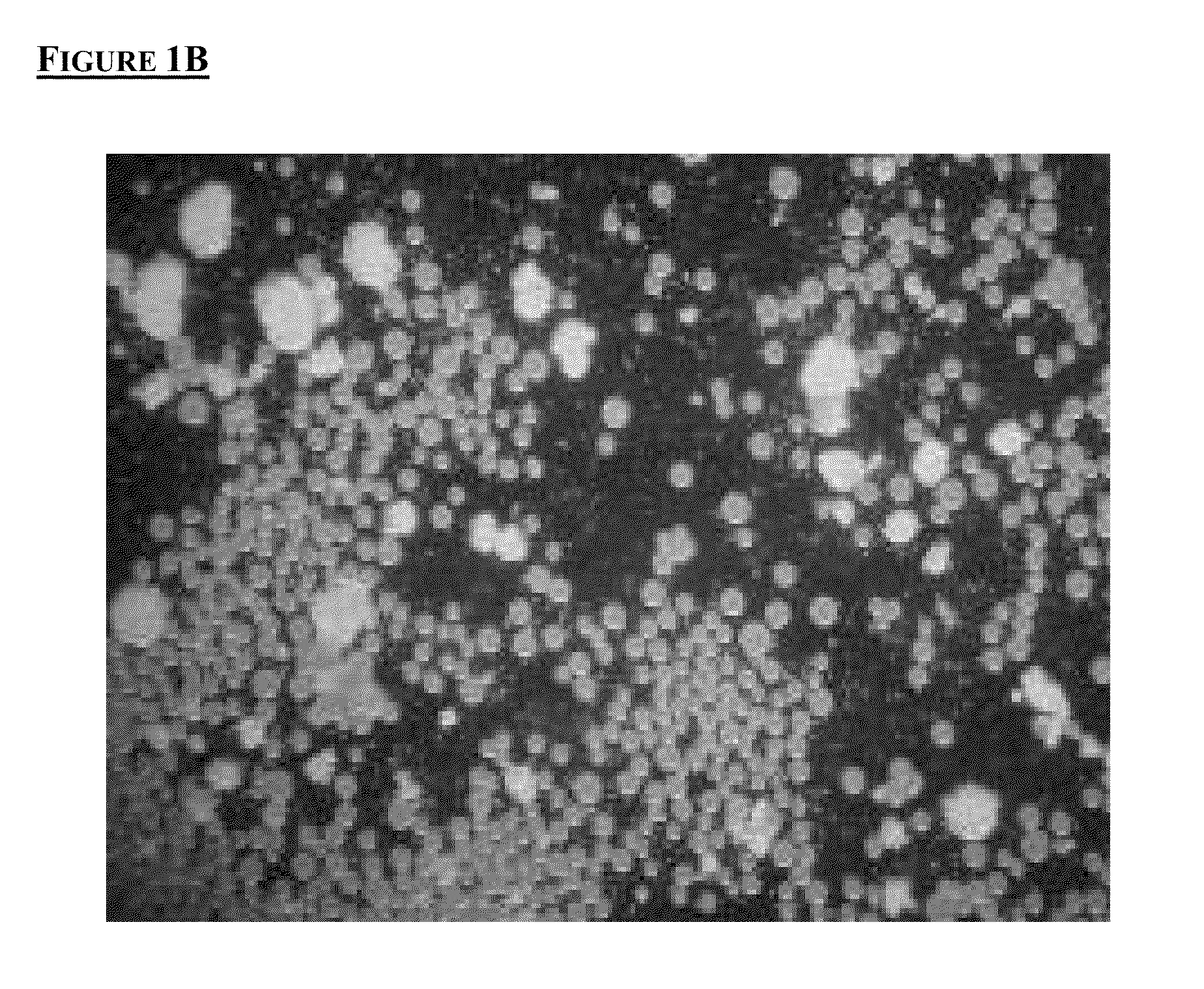Microcarriers for Stem Cell Culture
a stem cell culture and micro-carrier technology, applied in the field of cell biology, molecular biology and biotechnology, can solve the problems of large surface area, large surface area, and difficulty in preparing numerous plates for seeding, so as to achieve stable and long-term culturing, culture and differentiation of stem cells on micro-carriers. the effect of improving the stability and long-term
- Summary
- Abstract
- Description
- Claims
- Application Information
AI Technical Summary
Benefits of technology
Problems solved by technology
Method used
Image
Examples
example 1
Suspension Culture of Human Embryonic Stem Cells
[0850]We demonstrate the use of several types of microcarriers that support the growth of hESC in an undifferentiated state. The main findings are highlighted in FIGS. 1 to 5.
[0851]The following 3 classes of microcarriers (see FIG. 1) have been tested which are capable of growing hESC in 3D, namely: rod shaped, cellulose microcarriers (DE52, DE53 and Q53); small, spherical Tosoh hydrophilic microcarriers (10 and 65 microns in diameter); large, spherical, microporous and macroporous carboseed microcarriers.
[0852]FIG. 2 shows the work flow of microcarrier cultures. Conventional 2D colony cultures can be passaged onto microcarriers by 2 sets of methods, mechanical dissociation, e.g. using a cell scraper or pipette, or by enzymatic dissociation, e.g. collagenase harvested clumps or trypLE harvested single cells. These microcarrier cultures can further be passaged onto other microcarriers by mechanical dissociation, e.g. using a pipette, si...
example 2
Human Embryonic Stem and Human iPS Cell Lines
[0860]Human embryonic stem cell lines, HES-2 (46X, X), and HES-3 (46X, X) are obtained from ES Cell International. The cells are frozen and stored in liquid nitrogen as a suspension of 200×200 μm cell clumps obtained from 2D colony culture or as cell-microcarrier aggregates obtained from microcarrier cultures. Human iPS cells (iMR90) were obtained from J. Thomson (University of Wisconsin)
example 3
Microcarriers: Cellulose Cylindrical Microcarriers
[0861]DE-52, DE-53 and QA-52 microgranular cylindrical shape anion exchange chromatography matrices (Whatman) are used as microcarriers for cell propagation.
[0862]DE-52 and DE-53 microcarriers are charged with tertiary amines (DEAE) at small ion exchange capacity of 1 and 2 milli-equivalents per gram dry material respectively.
[0863]QA-52 microcarriers are charged with quaternary amine (QAE) at small ion exchange capacity of 1 milli-equivalent per gram dry material. The microcarriers are equilibrated with Ca2+Mg2+ free Phosphate Buffered Saline (pH=7.2) and sterilized by autoclaving in batches of 5 grams per 100 ml.
[0864]Matrigel coated microcarriers are prepared by overnight incubation of 20 mg microcarrier in 4 ml of matrigel solution (diluted 1:30) at 4° C. Coating of microcarriers with negatively charged polymers is done by overnight incubation (4° C.) of microcarriers in polymer solutions.
[0865]20 mg of microcarriers to the follo...
PUM
 Login to View More
Login to View More Abstract
Description
Claims
Application Information
 Login to View More
Login to View More - R&D
- Intellectual Property
- Life Sciences
- Materials
- Tech Scout
- Unparalleled Data Quality
- Higher Quality Content
- 60% Fewer Hallucinations
Browse by: Latest US Patents, China's latest patents, Technical Efficacy Thesaurus, Application Domain, Technology Topic, Popular Technical Reports.
© 2025 PatSnap. All rights reserved.Legal|Privacy policy|Modern Slavery Act Transparency Statement|Sitemap|About US| Contact US: help@patsnap.com



